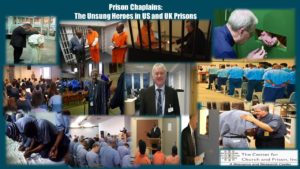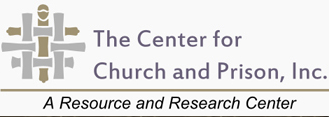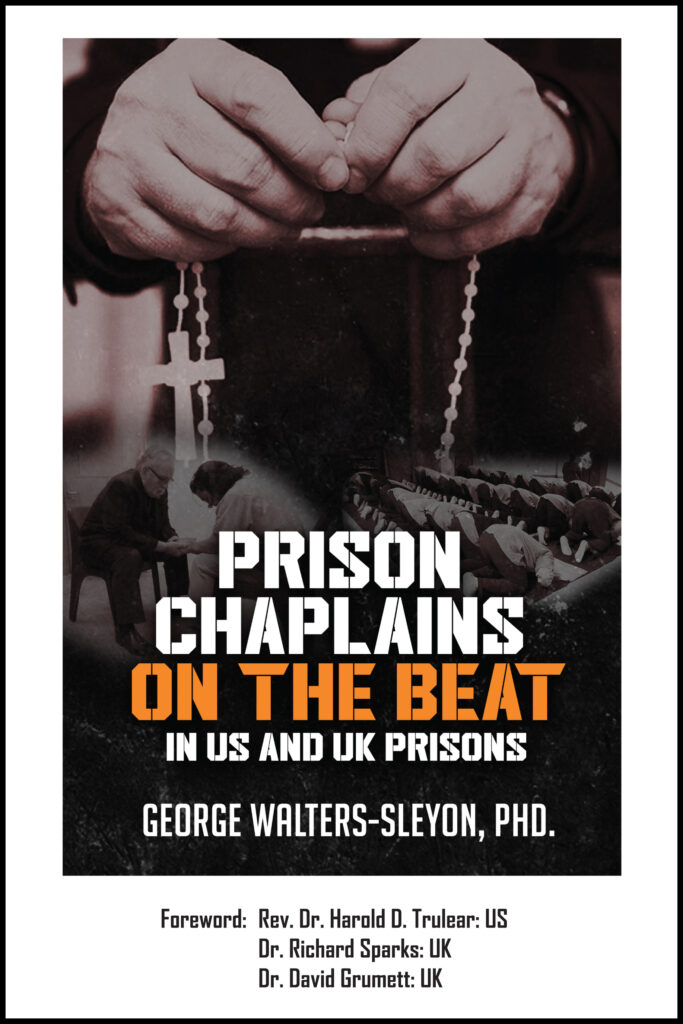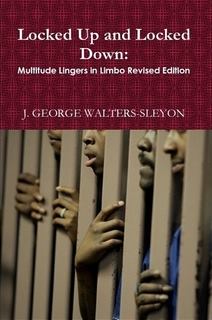Prison Chaplains and Prison Climates

Prison Chaplains’ Perspectives on Measuring US and UK Prison Climates
Dr. George Walters-Sleyon
This Newsletter briefly explores the concept of “prison climates” (Liebling, 2004) and how they are measured in light of the historic roles of prison chaplains in the United States and the United Kingdom. It argues that prison chaplains’ perceptions of the concepts and procedures as to how prison climates are measured are indispensable to prison research and penal reform.
Mass imprisonment has become an international phenomenon with the US and the UK at the center of this modern penal development contextually and Globally (Garland, 2001; Alexander, 2010; Prison Reform Trust, 2018). According to the Prison Policy Initiative, “2.3 million people are locked up in more than 6,000 correctional facilities operated by thousands of agencies” across the United States in 2019. The US general population is approximately 300 million. In the United Kingdom, with particular focus on Scotland and England and Wales, the Howard League for Prison Reform notes that the prison population of England and Wales is 82,905 in 2019. The general population of England and Wales is 58.3 million. For Scotland, the prison population is a little over 8,000. Scotland’s general population is 5.4 million according to Population UK. The United States has the highest prison population in the World. Similarly, the Prison Reform Trust Bromley Briefings Summer 2019 notes that: “Scotland and England and Wales have the highest imprisonment rates in western Europe. The prison population has risen by 69% in the last 30 years—but it has fallen in the last two. Yet there is no link between the prison population and levels of crime according to the National Audit Office. International comparisons also show there is no consistent link between the two” (Prison Reform Trust, 2018, 2).
With the consistent increase in prison populations across these nations, one is forced to explore the factors associated with a good “prison climate” in light of the cumulative impacts of excessive imprisonment (Liebling et al., 2007)? The question is unavoidable in light of the prevailing emphasis on the use of prisons in contrast to alternative sentences especially for non-violent crimes in the penal systems of the United States and the United Kingdom.
According to Alison Liebling et al., prison climate implies “the social, emotional, organizational and physical characteristics of a correctional institution as perceived by inmates and staff” (Liebling et al., 2007, 447). Generally associated with the “deprivation of liberty,” prison function as a place for punishment. However, prisons reflect characteristics that are both homogenous and heterogeneous. Some homogeneous characteristics include the concept and practices associated with prison management, the harshness of the management praxis, the structure of the building as well as the existence of a sort of affectivity or the lack thereof between prisoners and staff members. What is heterogeneous includes the particular characteristics of individual prisons and their treatment of prisoners.
The impact of a negative or positive prison climate is shown in the prison and post-prison experience of prisoners after release. The climate in any prison contributes to the possibility of successful rehabilitation and reintegration of prisoners (Liebling, 2004).
Liebling et al. note that prison climate “could be potentially considered as a penological equivalent to environmental criminology, where behaviors are influenced by placed-based factors.” The characteristics for the classification of healthy or non-healthy prisons also include the inputs of prisoners in relation to the following: “legitimacy,” “fairness”, “justice” and “respect.” Liebling et al. explain that the “concepts of respect, fairness, support, humanity, safety, order, opportunities for development, use of power/authority, level of trust, feelings of validation/appreciation, degree of communication, quality of relationships, levels of tension/well-being, alienation/belonging, degree of loyalty” (Liebling et al., 2007, 453) are fundamental to measuring the climate of any prison.
The argument in this brief analysis is that while prison research experts have eloquently articulated the principles and concepts associated with measuring the climates of prisons, isn’t it expedient to include the peculiar perspectives of prison chaplains in determining the characteristics and traits of healthy or unhealthy prisons in the United States and the United Kingdom? My research explores this question and many more. It concludes that based on their historic roles in the development of the modern penal systems of the US and the UK, prison chaplains are absolutely indispensable to the development of procedures and concepts associated with the measurement of prison climates across the US and the UK.
According to the Pew Research Center 2012 research: A 50-State Survey of Prison Chaplains, there are over 1,600 prison chaplains in local jails, state and federal prisons serving in part-time and full-time capacities across the United States. Similarly, there were 60 prison chaplains serving in volunteer, part-time and full-time capacities in Scotland at the time of my research. In Addition, based on the Ministry of Justice June 2017 statistics, there were 461 prison chaplains in England and Wales (Ministry of Justice, 2017). In contrast to the number of prison chaplains serving in the Scottish Prison Service, the numbers above do not include individuals or religious organizations providing chaplaincy services on a volunteer basis in prisons and jails in the United States and England and Wales.
Prison chaplains have been a historic part of the development of prisons in the United States and the United Kingdom as pastoral caregivers as well as moral and ethical catalysts (Skotnicki, 1991; Cameron, 1983; Phillips, 2013). My research concludes that prison chaplains are no less important than they were especially taking into consideration the massive increase and normalization of prison populations in the US and the UK penal systems after 1970. It contends that prison chaplains execute their duties in prison environments that are constantly in “flux,” changing at the same time institutionally normative. As religious workers and pastoral caregivers, prison chaplains function as “risk managers” in the prison environment (Hicks A. 2012; 2008; 2010). However, they are also engaged in managing the spiritual, emotional and psychological needs of prisoners (Thomas, 2012). Prison chaplains are constantly confronted with the existential angst of imprisonment and the depth of human frailty in the prison environment. They navigate these experiences through their religious understanding and faith communities (Sundt & Cullen, 2007; 2002; Sundt, Dammer, & Cullen, 2002;).
Thus, I conclude, it is necessary for prison research experts, prison managers and policy makers to view the opinions and experiences of prison chaplains as realistically indispensable to the daily management of prisons and measurement of their climates across the United States and the United Kingdom.
George Walters-Sleyon, PhD,
Email: gwalt436@gmail.com
Website: www.georgewalterssleyon.com
PDF: Prison Chaplains’ Perspectives on Measuring US and UK Prison Climates
Bibliography
Alexander, M. (2010). The New Jim Crow: Mass Incarceration in the Age of Colorblindness. New York: The New Press.
Cameron, J. (1983). Prisons and Punishment in Scotland from the Middle Ages to the Present. Edinburgh: Canongate Publishing.
Garland, D. (2001). Mass Imprisonment: Social Causes and Consequences. London: SAGE Publications.
Hicks, A. (2012). Learning to Watch Out: Prison Chaplains as Risk Managers. Journal of Contemporary Ethnography 41(6), 636-667.
Hicks, A. M. (2008). Role Fusion: The Occupational Socialization of Prison Chaplains. Symbolic Interaction 31,4, 401-421.
Hicks, A. M. (2010). Prison Chaplains: Hearts in the Darkness: Thesis submitted to the Faculty of the Graduate School of the University of Colorado in partial fulfilment of the requirement for the degree of Doctor of Philosophy. Allison Marie Hicks.
Hulley, S. A. (2011). Respect in Prisons: Prisoners’ Experiences of Respect in Public and Private Sector Prisons. Criminology & Criminal Justice, 3-23.
Liebling, A. (2004). Prison and the Moral Performance: A Study of Values, Quality, and Prison Life. Oxford: Oxford University Press.
Liebling, A., Ross, W. M., Diamond, P., & Saylor, W. (2007). Measurement of Prison Social Climate: A Comparison of An Inmate Measure in England and the USA. Punishment & Society, 447-474.
Ministry of Justice. (2017). Freedom of Information Act (FOIA) Request-112352. Retrieved from https://assets.publishing.service.gov.uk
Pew Research Center. (2012). Religion in Prisons: A 50-State Survey of Prison Chaplains. Washington, D. C.: The Pew Research Center.
Phillips, P. (2013). Role and Identities of the Anglican Chaplain: A Prison Ethnography. Cardiff: Phillips, Peter.
Prison Reform Trust. (2018). Bromley Briefings Prison Factfile, Autumn. London: Prison Reform Trust.
Prison Reform Trust. (2019). Prison: The Facts Bromley Briefings Summer 2019. London: Prison Reform Trust.
Skotnicki, A. (1991). “Religion and the Development of the American Penal System” (Dissertation, Graduate Theological Union). Berkeley, California: UMI.
Sundt, J. L. (1997). “Bringing Light to Dark Places: An Occupational Study of Prison Chaplains.” Doctoral Dissertation, University of Cincinnati. Cincinnati: Jody L. Sundt.
Sundt, J. L., & Cullen, F. T. (2002). The Correctional Ideology of Prison Chaplains: A National Survey. Journal of Criminal Justice 30, 369-385.
Sundt, J. L., & Cullen, F. T. (2007). Doing God’s Work Behind Bars: Chaplains Reactions to Employment in Prison. Journal of Offender Rehabilitation, 45(3/4), 131-157.
Sundt, J. L., Dammer, H. R., & Cullen, F. T. (2002). The Role of the Prison Chaplain in Rehabilitation. Journal of Offender Rehabilitation, 35(3/4), 59-86.
Thomas, J. (2012). Conviction, Conversion and the Chaplain: An Investigative Study of the Possible Roles of Prison Chaplains in Shaping Prisoner’s Identities. London: CreateSpace Independent Publishing Platform.
Wagner, M. (. (2001). How Should Prisons Treat Inmates? California: Greenhaven Press, Inc.



